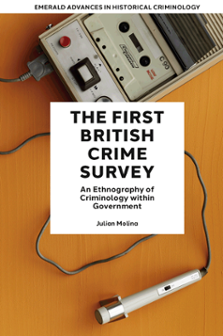
Index
The First British Crime Survey
ISBN: 978-1-80382-276-1, eISBN: 978-1-80382-275-4
Publication date: 23 August 2023
Citation
Molina, J. (2023), "Index", The First British Crime Survey (Emerald Advances in Historical Criminology), Emerald Publishing Limited, Leeds, pp. 181-184. https://doi.org/10.1108/978-1-80382-275-420231016
Publisher
:Emerald Publishing Limited
Copyright © 2023 Julian Molina. Published under exclusive licence by Emerald Publishing Limited
INDEX
- Prelims
- Introduction
- Interlude: The Secure Research Service
- Chapter 1 The Great Counting Crime Show
- Interlude: Analytical Errors
- Chapter 2 Official Critiques of Police Statistics: Criminological Knowledge and ‘Law and Order’ Politics
- Interlude: A Database of Experts
- Chapter 3 Selling the Survey's Value: Victimology Networks, Mandarins and the 1981 ‘Urban Disorders’
- Interlude: Before the Interview
- Chapter 4 Designing the Instrument: Counting Rules, Comparability and Consultations
- Interlude: ‘It Won't Fly…’
- Chapter 5 Reading Draft Reports: Editing as an Administrative Criminological Practice
- Interlude: Theatres of Logistics
- Chapter 6 Handling the Published Report: The Logistics of Dissemination and Media Monitoring
- Conclusion
- Appendix: Methodologies and Work Practices in the Archives
- References
- Index